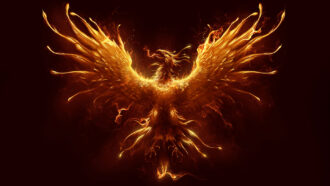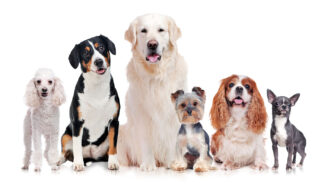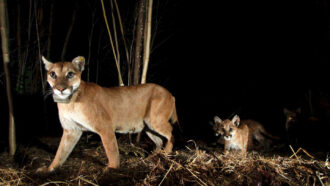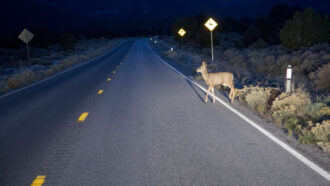
Bethany Brookshire was a longtime staff writer at Science News Explores and is the author of the book Pests: How Humans Create Animal Villains. She has a B.S. in biology and a B.A. in philosophy from The College of William and Mary, and a Ph.D. in physiology and pharmacology from Wake Forest University School of Medicine. She was a 2019-2020 Knight Science Journalism Fellow at MIT, the winner of the Society for Neuroscience Next Generation Award and the Three Quarks Daily Science Writing Award, among others.

All Stories by Bethany Brookshire
-
 Health & Medicine
Health & MedicineExplainer: What is cancer?
Cancer is a whole collection of diseases with one thing in common: all develop when the body’s cells start dividing out of control.
-
 Health & Medicine
Health & MedicineCan you really die of a broken heart?
Death by heartbreak doesn't just happen in stories. In real life, severe stress can cause takotsubo syndrome — a sometimes fatal heart problem.
-
 Ecosystems
EcosystemsThere’s life beneath the snow — but it’s at risk of melting away
The organisms that make winter homes in this subnivium help forests thrive year-round. But climate change is making this ecosystem disappear.
-
 Brain
BrainThis neuroscientist looks at how your brain plans for the future
Freek van Ede studies how the brain selects information to plan for the future. He’s finding clues in the tiny movements people make with their eyes.
-
 Animals
AnimalsWerewolves could learn from other critters when to hunt
Werewolves aren’t the only creatures that undergo transformation under the full moon. But could weak werewolves be at risk of becoming prey?
-
 Chemistry
ChemistryExplainer: How cells use chemistry to make the electricity of life
Charged particles, or ions, constantly move in and out of cells. These migrations produce tiny electric currents, which power your brain, heart and more.
-
 Health & Medicine
Health & MedicineExplainer: Anatomy of a heartbeat
Here’s how the heart pumps blood to each and every cell of the body. It beats roughly 60 times every minute, starting before we’re born.
-
 Brain
BrainZap, zap, zap! Our bodies are electric
Electricity powers key functions in the brain, heart and bone. Scientists are working to understand those currents to improve our health and moods.
-
 Animals
AnimalsPhoenixes aren’t the only creatures to survive the flames
Although a phoenix that burns and lives is a myth, many living things on Earth don’t mind hot temperatures.
-
 Animals
AnimalsExplainer: What is animal domestication?
The difference between a dog and a wolf isn’t looks or genes or even behavior. It’s the relationship these animals have with people.
-
 Animals
AnimalsCougars pushed out by wildfires took more risks around roads
After an intense burn in 2018 in California, big cats in the region crossed roads more often. That put them at higher risk of becoming roadkill.
-
 Animals
AnimalsCars hit more deer in the week after daylight saving time ends
In the days right after most Americans turn back the clock, vehicle crashes with deer increase by 16 percent, a new study shows.